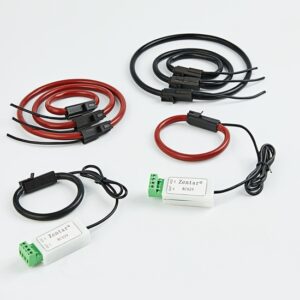Ratio difference: The fault of the transformer includes both the ratio difference and the angle difference. The ratio error is abbreviated as the ratio error, which is usually indicated by the symbol f.
It is equal to the difference between the actual secondary current and the primary current converted to the secondary side and the ratio of the primary current converted to the secondary side. It is indicated in percentage.
Angle difference: the phase angle error is abbreviated as the angle difference, which is usually indicated by the symbol δ. It is the phase difference between the secondary current vector and the primary current vector after rotating 180°.
The rule that the secondary current vector is ahead of the primary current vector δ is a positive value, otherwise it is a negative value, and the unit (‘) is used as the accounting unit.
When the thermal stability and dynamic stability multiples of the power system are faulty, the current transformer is subject to the thermal effect and electrodynamic effect of the infinite current caused by the short-circuit current. The current transformer should have the ability to accept and not be damaged. and dynamic stability multiples are indicated. The thermal stability multiple refers to the ratio of the current that does not cause the heating of the current transformer to exceed the allowable limit within 1s of the thermal stability current to the additional current of the current transformer. The dynamic stability factor is the ratio of the instantaneous value of the maximum current that the current transformer can accept to its additional current.
Assuming that the current transformer is connected to the line to change the current, the large and small currents on the line can be combined into large and small currents in different proportions. Just use a standard electrical surface, such as a general-purpose electrical surface with a current of 5A, to measure the current on the line as small as a few amperes and as large as tens of thousands of amperes through the current transformer. The basic structure of a current transformer is very similar to that of a transformer. It also has two windings, one called the primary winding or the primary winding, and the other called the secondary winding or secondary winding. Insulation between the two windings provides electrical isolation between the two windings.
When the current transformer is working, the primary winding W1 is connected to the line and the secondary winding W2 is connected to the electrical surface. Therefore, when measuring the current on the high-voltage line, although the primary voltage is high, the secondary voltage is very low. The operator and appearance are very safe.




